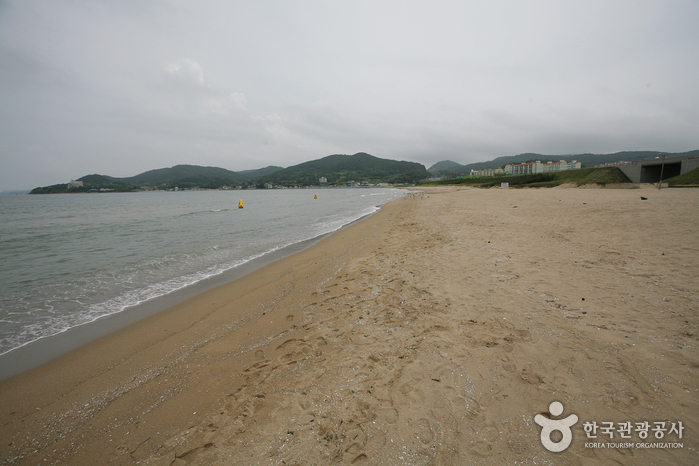Pohang Steelworks (포항제철소)
4.8Km 2018-09-05
6261, Donghaean-ro, Nam-gu, Pohang-si, Gyeongsangbuk-do
Pohang Steelworks, also known as POSCO, was built at Yeongilman Bay from 1970 until 1981 to shift the focus of the country's growth engine from the agriculture-oriented primary industry of the 1960s to the heavy chemical industry. Photography within the factory is prohibited, making a visit here key to fully experiencing all POSCO has to offer.
Lotte Mart - Pohang Branch [Tax Refund Shop] (롯데마트 포항점)
4.9Km 2024-04-22
247, Jigok-ro, Nam-gu, Pohang-si, Gyeongsangbuk-do
-
Olive Young - Pohang Jigok Branch [Tax Refund Shop] (올리브영 포항지곡점)
4.9Km 2024-06-26
#108, #109, and #110, 257, Jigok-ro, Nam-gu, Pohang-si, Gyeongsangbuk-do
-
PARK 1538 (POSCO Museum) (포스코역사박물관)
5.0Km 2024-10-24
14 Donghaean-ro 6213beon-gil, Nam-gu, Pohang-si, Gyeongsangbuk-do
The PARK 1538 POSCO Museum not only showcases the history, spirit, corporate culture and vision of POSCO, but also Pohang city's development, showing the city's transformation alongside the company. POSCO was able to achieve success thanks to the POSCO employees who fought against all kinds of adversities. The museum showcases such great achievements, as well as the entire history of the company, giving dreams and hopes to the youth who visit the museum.
Olive Young - Pohang Yangdeok Branch [Tax Refund Shop] (올리브영 포항양덕점)
5.1Km 2024-06-27
225, Sindeok-ro, Buk-gu, Pohang-si, Gyeongsangbuk-do
-
Robo Life Museum (로보라이프 뮤지엄)
5.7Km 2021-03-10
39, Jigok-ro, Nam-gu, Pohang-si, Gyeongsangbuk-do
054-279-0427
The Robo Life Museum is a place where one can meet robots that are already part of our daily lives, knowingly and unknowingly. Visitors can learn about robots while dancing and drawing with them as well as touching and operating them. Through the museum, visitors can experience what the future will be like. It also is an ideal place for kids to satisfy their curiosity and have fun.
Dogu Beach (도구 해수욕장)
8.1Km 2024-12-27
This small beach is located about 20 minutes away from Pohang city center, near Pohang Gyeongju Airport. Despite its small size, its fine sand and wonderful sea view make it a beloved hangout for locals and car campers (sleeping in one’s car) alike. Its small size, along with gentle waves, makes it a popular place for family visitors as well. There are a variety of delivery restaurants five minutes away by foot, so one can order delivery food straight onto the beach as well.
Homibando Peninsula Coastal Trail (호미반도 해안둘레길)
9.7Km 2024-02-13
360 Ibam-ri, Donghae-myeon, Nam-gu, Pohang-si, Gyeongsangbuk-do
The Homibando Peninsula Coastal Trail is a picturesque trekking route that spans a remarkable 58 kilometers of Pohang's coastline, stretching from Donghae-myeon to Janggi-myeon via Guryongpo-eup and Homigot Cape. This easternmost section of the Korean Peninsula offers an opportunity to marvel at rugged cliffs and savor the soothing sounds of crashing waves as you stroll along the shoreline. The trail is divided into four distinct courses, with the third course, known as Guryongso-gil, being the lengthiest, taking approximately two hours to complete. It begins at Janggun Rock, winding its way through the Golden Rain Tree and Black Jetbead colonies, ultimately concluding at Guryongso. On the other hand, the fourth course, Homi-gil, is the shortest and starts at Eagle Rock, concluding at the picturesque Homigot Sunrise Square.
Yeongil Bay Hot Springs (영일만온천)
9.9Km 2020-03-18
21, Unje-ro 386beon-gil, Nam-gu, Pohang-si, Gyeongsangbuk-do
+82-54-285-0101
The construction of this huge hot spring complex started in Yeongil Bay in 1988 after it was found that Yeongil Bay has the highest geothermal heat in Korea while drilling for oil in 1974.
The water’s main ingredients contain healthy minerals such as calcium, natrium, fluorine, magnesium, chlorine, sulfuric acid, fluorine, zinc, germanium and radium. Yeongil Bay Hot Springs maintains its water with alkali bicarbonate at a pH of 9.43. The temperature of the water is somewhat low though at 35℃.
The hot springs help to recover from fatigue, to help beauty care, anti-aging, neuralgia, heart disease, and liver functions. The water here also has a very unique texture.
Chilpo Beach (칠포해수욕장)
10.2Km 2024-02-13
Heunghae-eup, Buk-gu, Pohang-si, Gyeongsangbuk-do
Chilpo Beach is celebrated for its four kilometers of white sand and crystal-clear waters. The shallow waters near the beach, approximately one meter deep, are ideal for children, while further out, the depth reaches adult shoulder level, making it suitable for swimmers of all ages. Additionally, visitors can enjoy a scenic trek along the wooden deck at the beach's end, offering splendid views of the East Sea. Since 2007, the beach has become even more renowned for hosting the Chilpo Jazz Festival every September. This event presents a unique opportunity to experience live jazz music by the sea, adding a musical charm to the autumn ambiance.

![Lotte Mart - Pohang Branch [Tax Refund Shop] (롯데마트 포항점)](http://tong.visitkorea.or.kr/cms/resource/34/2883734_image2_1.jpg)

 English
English
 한국어
한국어 日本語
日本語 中文(简体)
中文(简体) Deutsch
Deutsch Français
Français Español
Español Русский
Русский